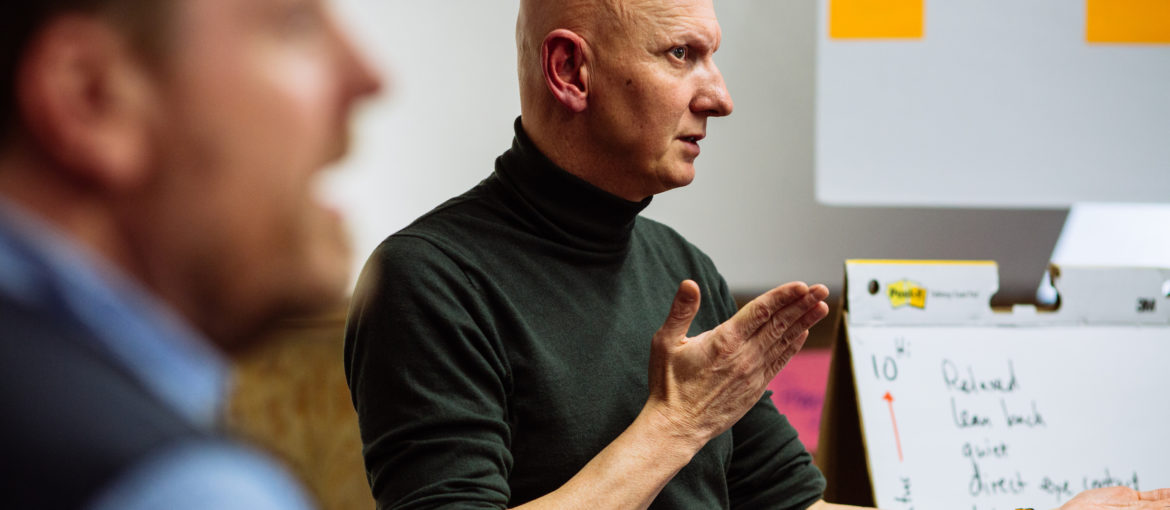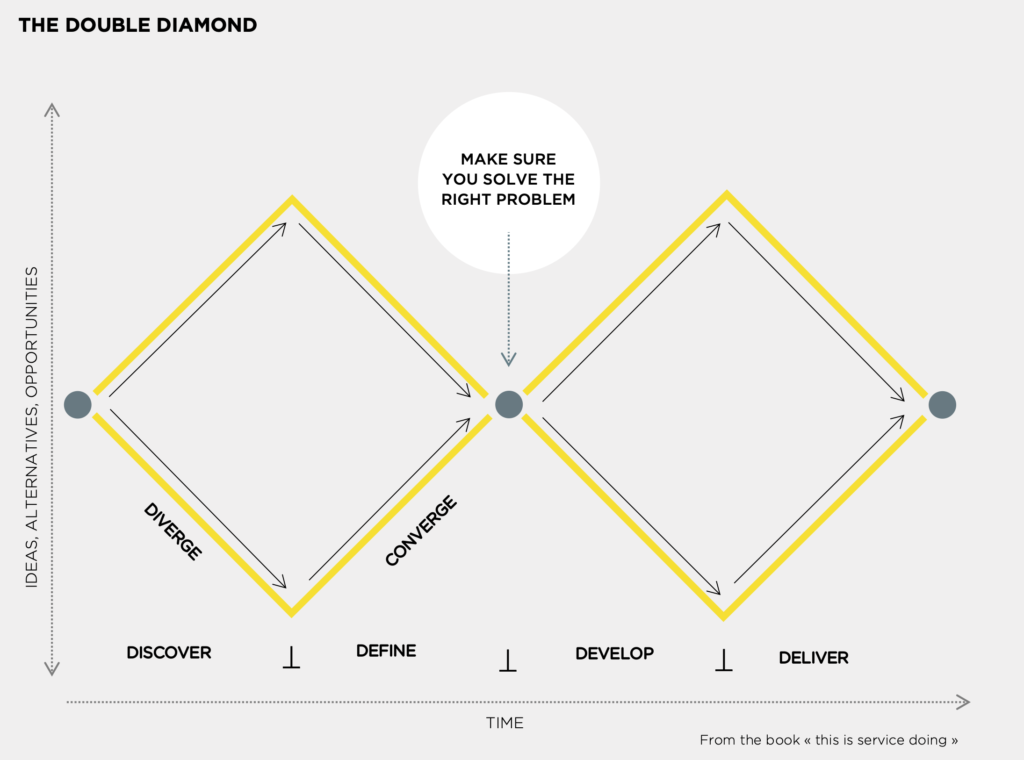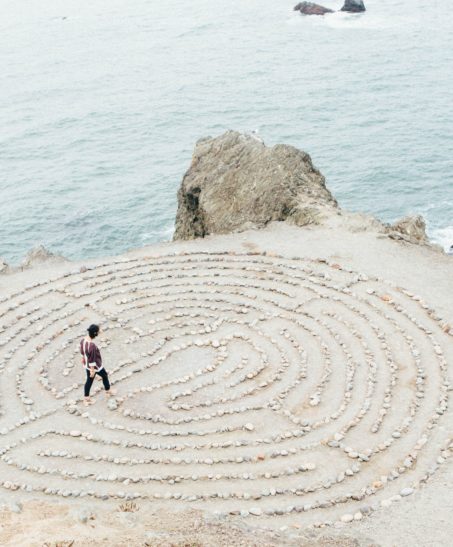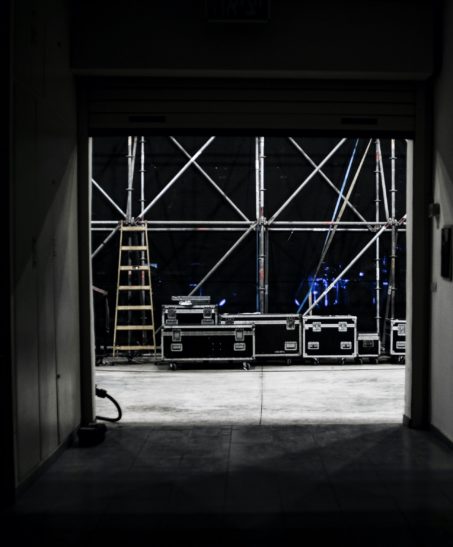I am a coach and I came across the methodology of Service Design Thinking a few years ago through working with groups around innovation and building stronger, human-centric organizational cultures.
Having had extensive experience both as a coach and as an Innovation facilitator, I started to use the Design Thinking methodology quite naturally as a coach.
I found out that both methodologies have a lot in common and they are very compatible:
- They are step-by-step ways to understand what is really important to people
- They have a strong emphasis on the human aspects of change
- they tend to help people connect with, ideate and test real solutions to real problems
- empathy and curiosity are key components
- prototyping or learning through experience is essential
- brainstorming is used to explore ways forward
- experiences and journeys are key elements to better understand behavior
- etc…
Design thinking begins with understanding how people live and what experiences they have. Much like an explorer discovering a new land, it is based on curiosity and gathering data, taking in information without judging it. Only after this step we enter the “sense- making” phase. What does this mean, how is this important? Since we are unable to process large amounts of data, we need to empathize with it, make it “human”. To do so we use simple paper-based tools to cut through the complexity and see patterns and sense.
Once we have found sense and uncovered areas of opportunities, we start the creative process of ideation. Only now we look at what is possible! This will give us many, many ideas. However, ideas without a test are just ideas. Hence, we need to pick a few and explore their potential. By making ideas real and testing them in the real world, we learn from them. This in turn allows us to iterate and to improve them, step by step. Only once we have gathered sufficient data and experience, we are able to comfortably roll out the change. And by doing so we keep on learning.
In Coaching we help the coachee design for their fulfilment, which begins by understanding who we are and what matters to us. Once we have a grasp of that, we start making sense, exploring creative options: those options we can test in the real world and see what the impact is on us, on others and on the situation. We improve our learning by iterating. This, in essence, will allow us to make better choices which are based on insight and experience.
Both approaches complement each other magically.
I strongly believe that as a coach, learning about Design Thinking and as a designer learning about coaching is a real asset to make people lives better amore fulfilled lives and ultimately to make a better world!




